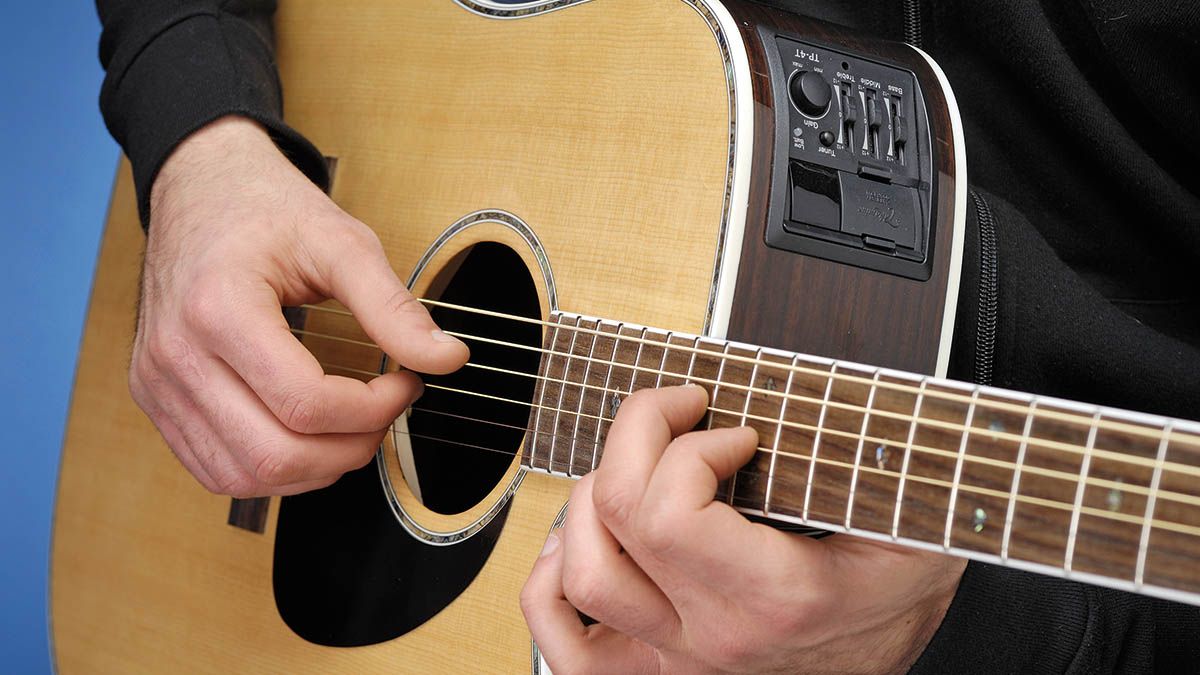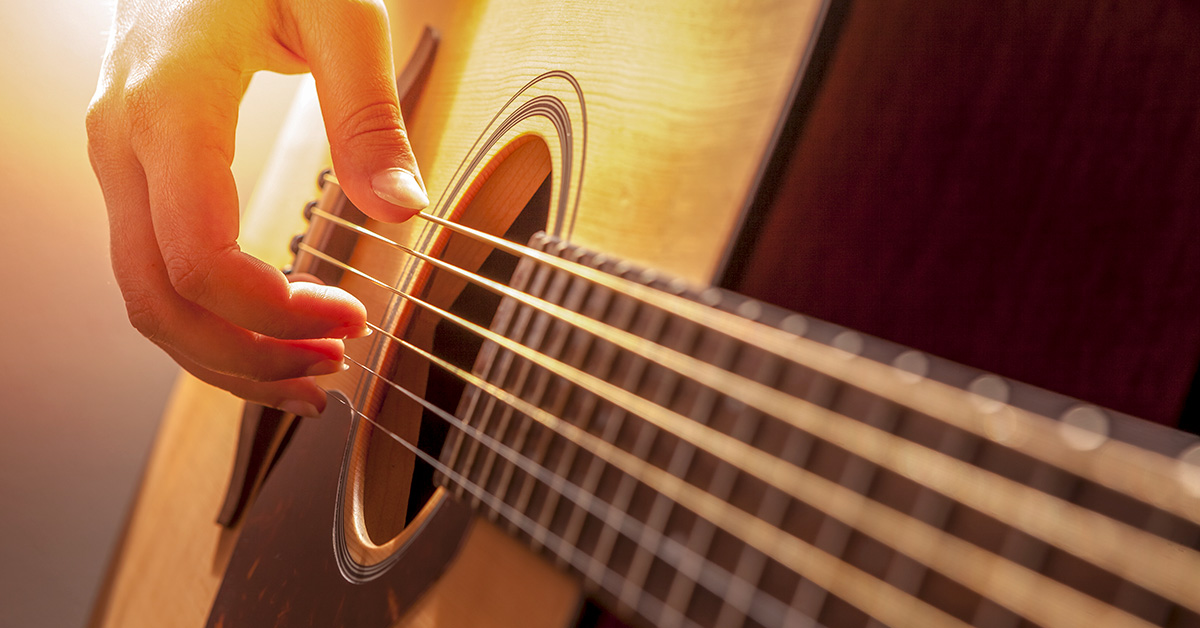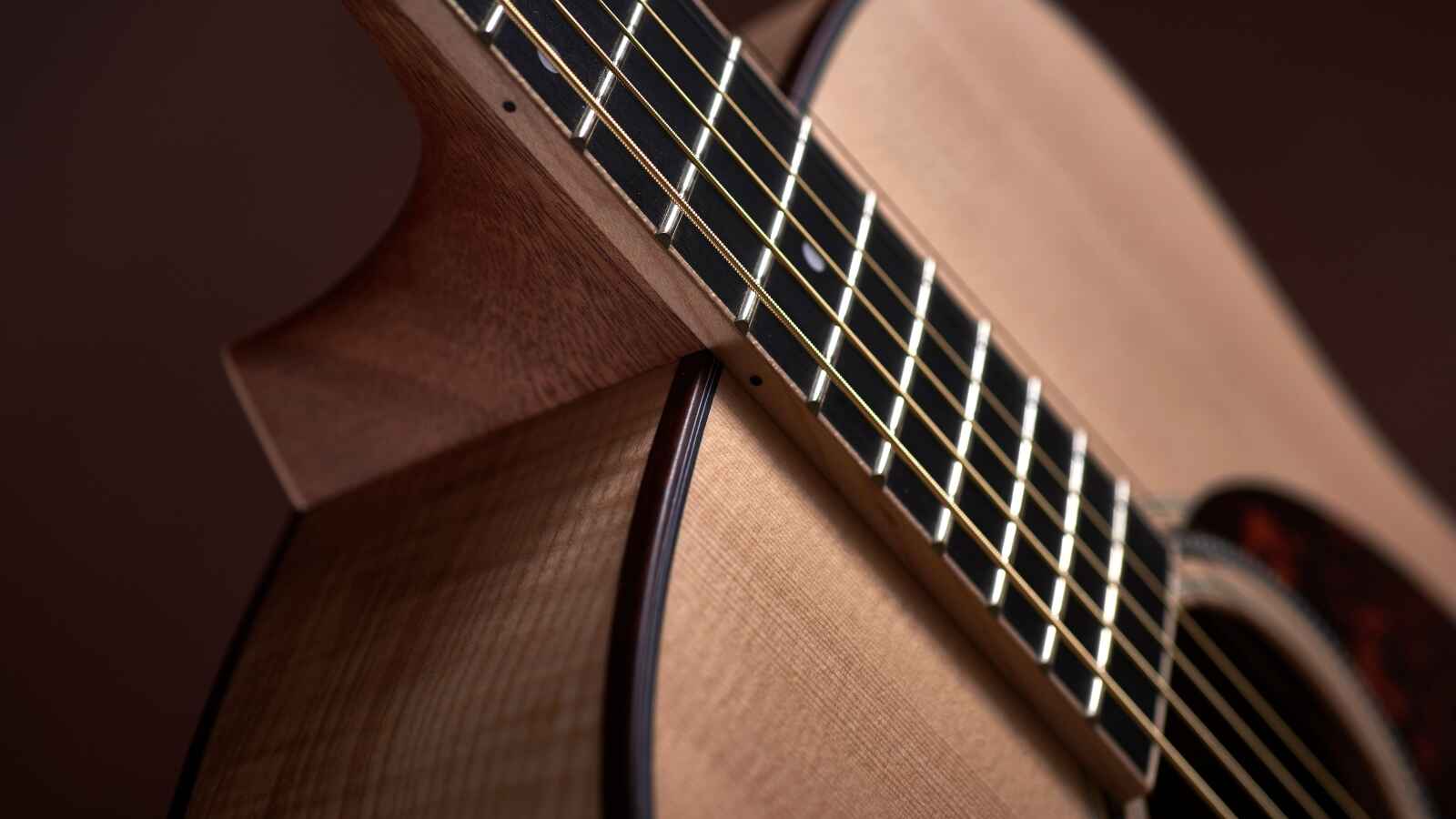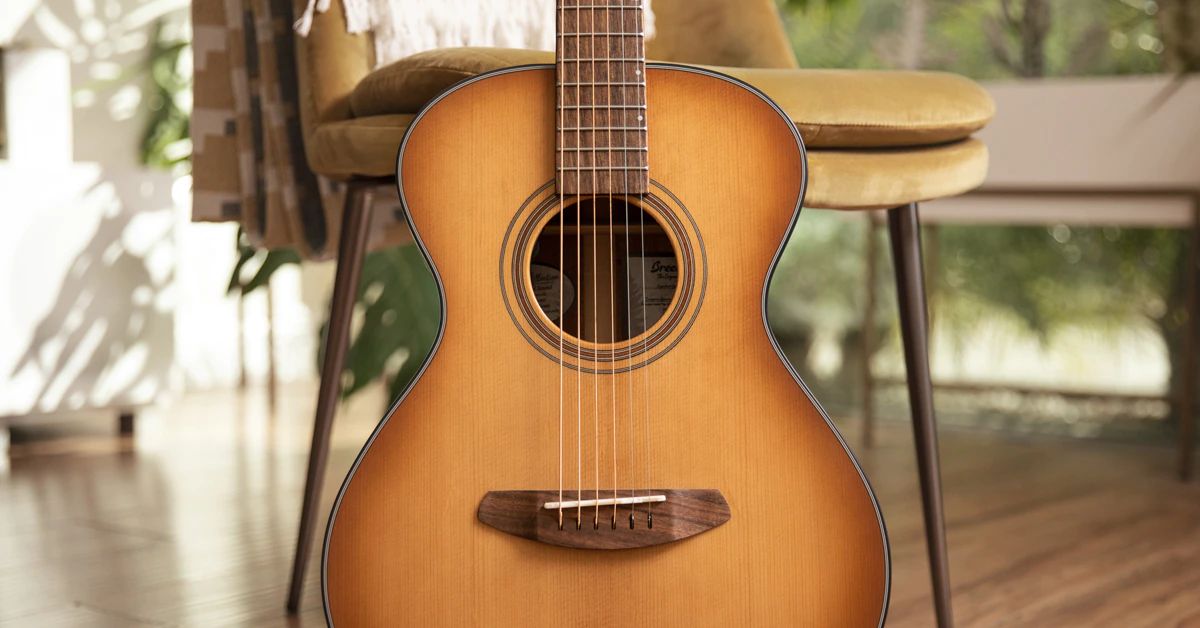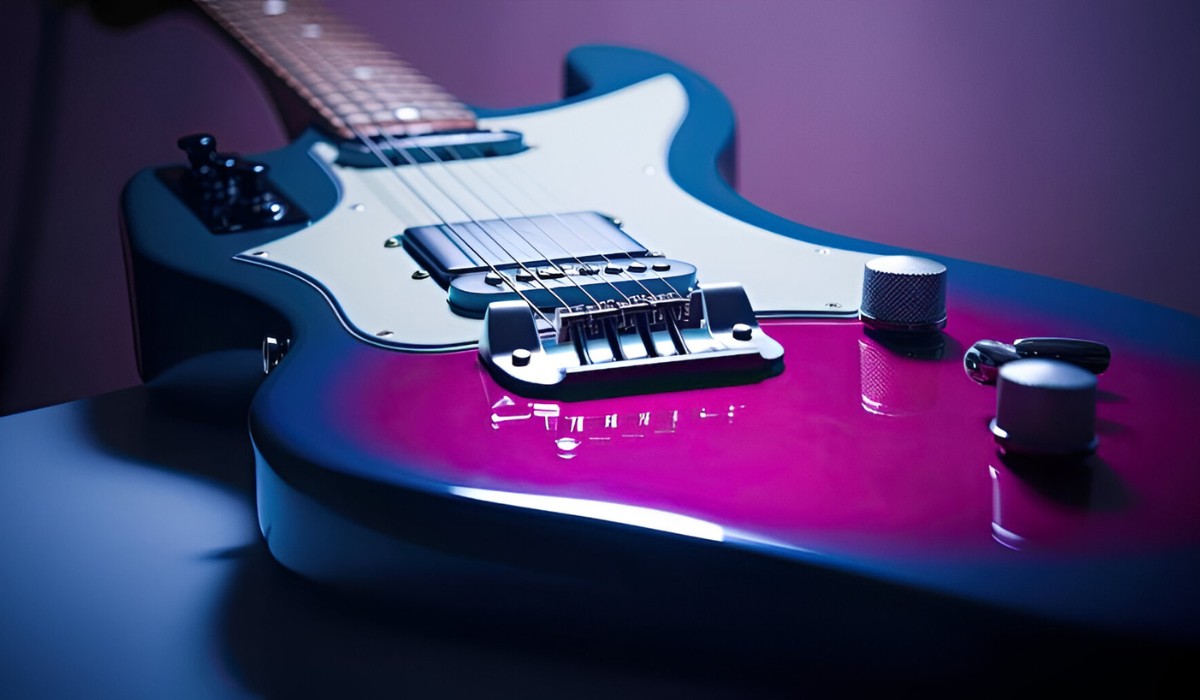Introduction
Acoustic guitar string squeaking can be a frustrating issue for guitarists of all levels. The unpleasant sound of squeaking strings can distract from the music and hinder your playing experience. Whether you’re performing on stage or recording in the studio, eliminating string squeaking is essential for achieving a clean and professional sound.
String squeaking typically occurs when the strings make contact with either the frets or the fingers. The friction between the string and these surfaces creates the annoying squeaking sound. While some degree of string noise is unavoidable, there are several techniques and strategies you can employ to minimize or even eradicate this issue.
In this article, we will explore various methods to stop acoustic guitar string squeaking. We will discuss the causes of string squeaking, proper string cleaning and maintenance, choosing the right strings, applying lubrication, improving technique and playing style, adjusting the guitar setup, and employing a string muting technique.
By following these guidelines, you’ll be able to enjoy a squeak-free performance and enhance your overall playing experience. Whether you’re a beginner or an experienced guitarist, these tips will help you eliminate string squeaking and achieve a smoother and cleaner sound from your acoustic guitar.
Understanding the Causes of String Squeaking
Before addressing how to stop acoustic guitar string squeaking, it’s important to understand the underlying causes. By identifying the root of the problem, you’ll be able to implement the most effective solutions.
One of the main causes of string squeaking is friction. When your fingers press down on the strings against the frets, the strings can rub against the metal frets, generating unwanted noise. This friction is often intensified if your fingers are sweaty or if the strings are dirty or worn out.
Another culprit of string squeaking is improper finger placement. If your fingers accidentally touch adjacent strings while fretting, their movement can create friction and result in squeaking. Furthermore, the angle at which you press down on the strings can also contribute to the problem. If you’re pressing too hard or at an incorrect angle, the strings are more likely to squeak.
In some cases, the issue may be related to the guitar setup. High action (the distance between the strings and the fretboard) or unevenly leveled frets can increase the likelihood of string squeaking. Additionally, using certain types of strings, particularly those with a rough surface or high tension, can exacerbate the squeaking problem.
Lastly, your playing style and technique can also play a significant role in string squeaking. If you have a heavy-handed playing style or tend to slide your fingers across the strings abruptly, you’re more likely to produce squeaking noises. Proper finger positioning and a controlled, smooth playing style can help minimize string squeaking.
By understanding these causes, you can take targeted steps to address the issue. In the following sections, I will provide you with practical tips and techniques to effectively eliminate acoustic guitar string squeaking.
Proper String Cleaning and Maintenance
A crucial step in eliminating acoustic guitar string squeaking is to maintain clean and well-maintained strings. Over time, sweat, dirt, and oils from your fingers can accumulate on the strings, causing friction and contributing to string squeaking. Here are some tips to keep your strings in optimal condition:
1. Wipe down your strings: After each practice session or performance, take a soft cloth or string cleaner and wipe down the strings thoroughly. This helps remove dirt and oils that can hinder the smoothness of your strings.
2. Clean your hands: Before playing, wash your hands thoroughly to remove any sweat or oil residue. Keeping your hands clean will minimize the transfer of dirt and improve the tone and playability of the strings.
3. Use string conditioner: Products like string conditioner or lubricant can help reduce friction between the strings and your fingers. Apply a small amount to a clean cloth and run it along the length of each string to add a lubricating layer.
4. Change your strings regularly: Strings naturally wear out over time, losing their brightness and becoming more susceptible to squeaking. It’s recommended to change your strings every few months, or more frequently if you play frequently or notice significant wear.
By maintaining clean and well-cared-for strings, you can greatly reduce the chances of experiencing string squeaking. This simple step can also improve the overall tone and playability of your acoustic guitar.
Choosing the Right Strings
When it comes to stopping acoustic guitar string squeaking, selecting the right strings can make a significant difference. There are a few factors to consider when choosing strings for your guitar:
1. String Material: Different string materials will have varying levels of friction and squeakiness. Experiment with different types such as phosphor bronze, bronze, or coated strings, and find the ones that offer a smoother and quieter playing experience.
2. String Gauge: The gauge, or thickness, of the strings can affect how they interact with the frets and the fingers. Lighter gauge strings tend to produce less string noise, as they require less finger pressure and have less contact with the frets. However, keep in mind that lighter gauge strings may sacrifice some tonal richness and volume.
3. Coated Strings: Coated strings have a thin layer of polymer or other material that helps reduce friction between the strings and your fingers. These strings are specifically designed to minimize string noise and extend the lifespan of the strings.
4. Brand and Quality: Choosing reputable string brands and high-quality strings can also contribute to a better playing experience. Well-made strings tend to have smoother surfaces and better consistency, reducing the chances of string squeaking.
By experimenting with different string options and considering your playing style and preferences, you can find the strings that offer the best combination of playability, tone, and reduced string squeaking.
Applying Lubrication
One effective technique for minimizing acoustic guitar string squeaking is to apply lubrication to the strings. Lubrication can reduce friction between the strings and your fingers, resulting in smoother and quieter playing. Here are some methods to consider:
1. String Lubricants: There are various string lubricant products available specifically designed to reduce string noise. These lubricants can be applied directly onto the strings using a cloth or applicator. They create a thin protective layer that helps prevent the strings from sticking to your fingers and reduces squeaking.
2. Baby Powder or Talcum Powder: Another option is to use baby powder or talcum powder. Apply a small amount onto a clean cloth and rub it along the strings, focusing on the areas where your fingers make contact. This helps to absorb moisture and reduce friction. Be sure to wipe off any excess powder before playing.
3. Graphite: Graphite is a lubricant commonly used for guitar nut slots, but it can also be applied to the strings to reduce squeaking. Rub a pencil lead or a graphite lubricant stick along the strings and gently spread it with a cloth. This can help create a smoother surface and decrease friction.
It’s important to note that while lubrication can be effective in reducing string squeaking, it may also impact the tone and sustain of your guitar. Therefore, it’s recommended to use lubricants sparingly and experiment to find the right amount that achieves a balance between reduced squeaking and optimal tone.
Remember to clean the strings regularly and reapply lubrication as needed. By keeping the strings properly lubricated, you can enjoy a more comfortable and quieter playing experience.
Improving Technique and Playing Style
When it comes to reducing acoustic guitar string squeaking, your technique and playing style play a crucial role. By making adjustments to your approach, you can minimize unwanted noise and produce a cleaner sound. Here are some tips to help improve your technique and playing style:
1. Finger Placement: Pay close attention to your finger placement on the fretboard. Ensure that your fingers are coming down squarely on the strings, avoiding any accidental contact with neighboring strings. This will help reduce the chances of generating squeaking noises.
2. Lighter Touch: Avoid applying excessive pressure when pressing down on the strings. A lighter touch will not only reduce squeaking but also improve your overall finger agility and dexterity. Experiment with finding the optimal amount of pressure needed to produce a clean sound without unnecessary string noise.
3. Smooth Transitions: Practice smooth and controlled finger transitions between chords and notes. Avoid lifting your fingers too quickly or sliding them abruptly across the strings, as these actions can create additional squeaking. Focus on minimizing any unnecessary string contact during transitions.
4. Slow Down and Practice: Take your time when learning new songs or techniques. Slow down the tempo and pay attention to the clarity of your notes. By practicing slowly and gradually increasing the speed, you can develop a cleaner technique and reduce the chances of string squeaking.
5. Finger Warm-Up Exercises: Warm up your fingers before playing by performing finger exercises and stretches. This will promote finger flexibility and control, reducing the likelihood of accidental string contact and thus minimizing string squeaking.
Remember, improving your technique and playing style takes time and practice. Be patient and persistent in your efforts, and you will gradually see improvements in your overall sound quality and reduced string squeaking.
Adjusting the Guitar Setup
In some cases, acoustic guitar string squeaking can be caused by issues related to the guitar’s setup. Making necessary adjustments to your guitar can help minimize friction and improve the overall playability of the instrument. Here are some areas to consider when adjusting the guitar setup:
1. Action Height: The action refers to the distance between the strings and the fretboard. If the action is too high, it can increase the chances of string squeaking. It’s essential to find the right balance, as a lower action may result in string buzz. Consult with a professional guitar technician or luthier who can help adjust the action to your playing style and preferences.
2. Fret Leveling: Uneven or worn-out frets can contribute to string squeaking. If certain frets are higher or lower than others, it can create inconsistent contact between the strings and frets, resulting in unwanted noise. A qualified technician can perform a fret leveling procedure to ensure a smooth and even playing surface.
3. Nut Slot Height: The nut slots play a vital role in determining the height and spacing of the strings at the headstock. If the nut slots are too high, it can create more friction and increase the likelihood of string squeaking. Consider having a professional make adjustments to the nut slot height for optimal string action.
4. Lubricate Contact Points: Apply a small amount of graphite or lubricant to the contact points where the strings pass through the bridge and nut. This can help reduce friction and minimize string squeaking. Ensure that you use a suitable lubricant recommended for guitar use.
By making adjustments to the guitar setup, you can improve the overall playability and reduce the chances of string squeaking. However, it’s essential to have these adjustments performed by a qualified technician to ensure proper execution and to avoid causing damage to your instrument.
Using a String Muting Technique
A string muting technique is another effective method to minimize acoustic guitar string squeaking. By selectively muting certain strings, you can reduce the chances of unwanted noise and create a cleaner sound. Here are a few techniques to consider:
1. Palm Muting: Palm muting involves lightly resting the palm of your strumming hand on the strings near the bridge while playing. This technique dampens the strings’ vibrations, resulting in a muted and percussive sound. By muting the strings close to the bridge, you can prevent excessive string squeaking and achieve a controlled tone.
2. Fretting Hand Muting: In addition to palm muting, you can also use your fretting hand to mute unwanted string noise. By lightly touching the strings with the fingertips of your fretting hand, you can prevent them from ringing out unintentionally. Experiment with different finger positions and pressure to find the most effective muting technique.
3. String Skipping: Another technique to reduce string squeaking is string skipping. Instead of playing consecutive strings, skip over the strings that you don’t need to play for a particular passage. By intentionally avoiding unnecessary string contact, you can minimize the chances of producing squeaking noises.
4. Deadening Techniques: Utilize techniques such as raking or partial deadening with either your picking hand or fretting hand. These techniques involve lightly touching the strings with your fingers or palm to dampen their vibrations and prevent them from ringing out fully. Practice these techniques to gain control over the amount of sustain and minimize string squeaking.
Remember to practice these string muting techniques slowly and gradually increase the speed as you become comfortable. With time and practice, you’ll be able to incorporate these techniques into your playing style, resulting in a cleaner and more controlled sound while minimizing string squeaking.
Conclusion
Acoustic guitar string squeaking can be a frustrating issue, but with the right strategies, you can effectively minimize or eliminate this unwanted noise. By understanding the causes of string squeaking, implementing proper string cleaning and maintenance, choosing the right strings, applying lubrication, improving technique and playing style, adjusting the guitar setup, and using string muting techniques, you can achieve a cleaner and more professional sound from your acoustic guitar.
Regularly clean your strings, wash your hands before playing, and consider using string lubricants or powders to reduce friction. Experiment with different string materials and gauges to find the ones that produce a smoother playing experience with minimal squeaking. Pay attention to your finger placement, maintain a lighter touch, and focus on smooth transitions to minimize unnecessary string contact.
Adjustments to the guitar setup, such as action height and nut slot height, can also contribute to reducing string squeaking. Consider seeking professional help if needed to ensure proper adjustments are made. In addition, using string muting techniques like palm muting and fretting hand muting can help dampen unwanted string noise.
Remember, eliminating string squeaking requires time, patience, and practice. Implement these techniques consistently and focus on refining your playing skills. By doing so, you’ll be able to enjoy a cleaner, more professional sound from your acoustic guitar and enhance your overall playing experience.







